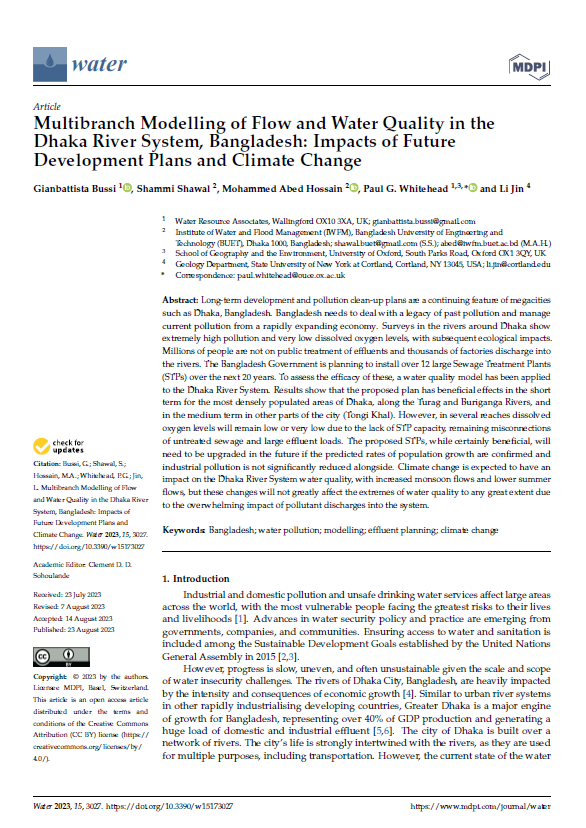Authors: Gianbattista Bussi, Shammi Shawal, Mohammed Abed Hossain, Paul Whitehead and Li Jin
Long-term development and pollution clean-up plans are a continuing feature of megacities such as Dhaka, Bangladesh. Bangladesh needs to deal with a legacy of past pollution and manage current pollution from a rapidly expanding economy. Surveys in the rivers around Dhaka show extremely high pollution and very low dissolved oxygen levels, with subsequent ecological impacts. Millions of people are not on public treatment of effluents and thousands of factories discharge into the rivers. The Bangladesh Government is planning to install over 12 large Sewage Treatment Plants (STPs) over the next 20 years. To assess the efficacy of these, a water quality model has been applied to the Dhaka River System. Results show that the proposed plan has beneficial effects in the short term for the most densely populated areas of Dhaka, along the Turag and Buriganga Rivers, and in the medium term in other parts of the city (Tongi Khal). However, in several reaches dissolved oxygen levels will remain low or very low due to the lack of STP capacity, remaining misconnections of untreated sewage and large effluent loads. The proposed STPs, while certainly beneficial, will need to be upgraded in the future if the predicted rates of population growth are confirmed and industrial pollution is not significantly reduced alongside. Climate change is expected to have an impact on the Dhaka River System water quality, with increased monsoon flows and lower summer flows, but these changes will not greatly affect the extremes of water quality to any great extent due to the overwhelming impact of pollutant discharges into the system.

